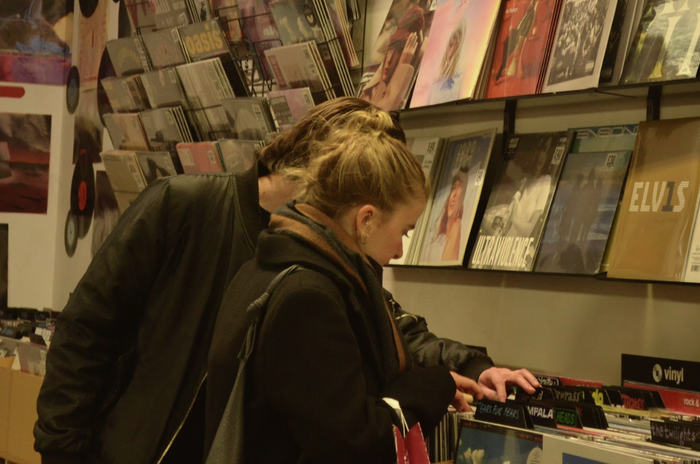Rhythm is a biped: your mother walked so you could talk
Georgina Holmes explains how bipedalism developing in early humans has given us both speech and rhythm

Music has often been crowned the ‘universal language of mankind’. Its unifying feature being rhythm, which – irrespective of native language – can be understood as well as the expressions of a face, evoking similar emotions in even the most disparate of cultures. Dance and song can connect people perhaps just as effectively as verbal communication. Music’s shared bonding efficacy with language makes sense in light of new findings on their shared evolutionary origins: beginning in the rhythms of the womb, bipedal footsteps didn’t just set the stage for dance, drums, and John Bonham, but also for the evolution of speech itself.
Unlike the irregular gaits of quadruped primates, upright walking provided a metronome for the developing fetus as the predictable thud of the mother’s footsteps created a steady auditory input – priming the brain for rhythmic entrainment, which is essentially synchronising to rhythms. Known as the prenatal rhythmic experience (PRE) hypothesis, it was from the rhythm of the bipedal walk that we gained our ability to synchronise with external rhythm. In fact, typical walking speed is around 120 beats per minute – a tempo that gives most hit songs their danceability.
“But rhythm isn’t just for the dancer – it has transformed communication”
But rhythm isn’t just for the dancer – it has transformed communication. A recent study published in Current Anthropology suggests that bipedalism shaped linguistic capabilities in early hominin fetuses. Many primate infants cling to their mother’s fur but in the evolutionary shift to walking upright, feet lost their grasping capacities and limitations in physical contact between mother and child grew. Infants separated from caregivers – even by short distances – produce gestural and vocal signals such as crying to communicate their needs. As a result, vocal interaction became essential for bonding and ‘motherese’, the sing-song, rhythmically exaggerated speech that caregivers instinctively use to communicate with infants, has remained universal.
“Rhythmic therapy could help those with movement or speech disorders”
This switch fostered a training ground for linguistics, entraining the motor capacities for the physical production of pitch, vocalisation rate, and communication cues. Rhythmic entrainment essentially arises through neural oscillations that are stimulated by rhythmic sounds, creating the ability for motor control of such vocalisations (and movements such as dance) to align with anticipated ‘events’ or beats. We evolved the ability to talk from the neural foundations that bipedalism provided us with and these changes were later co-opted for dancing.
Stepping forward, this information poses unique questions for further research. Could there be a correlation between variation in gait and the diversity of rhythmic structures observed in different languages? Evidence says yes, with studies that observe subtle differences in the walking patterns of Japanese children compared with those who speak entirely different languages. Could children born to mothers who are unable to walk, especially during pregnancy, have altered rhythmic entrainment? Could the prevalent use of push-chairs in the modern day hinder or transform early life auditory-motor experiences? And is the intrauterine experience more important than the experience of a baby outside the womb? With the potential for rhythmic therapy to help those with movement or speech disorders, these findings could be integrated into public health.
Whilst you’ll be unlikely to find any non-human primates with rhythmic perception, maybe Robbie William’s biopic A Better Man isn’t far from possibility as two chimpanzees in the St. Louis Zoo have regularly been seen walking bipedally in a synchronised conga, revealing the dormant potential that links the bipedal gait to rhythmic movement. So, next time your legs are getting tired from dancing around in Revs, remember you have them to thank for the music – and for your ability to tell the people shoving you around to move.
 News / SU reluctantly registers controversial women’s soc18 December 2025
News / SU reluctantly registers controversial women’s soc18 December 2025 Features / Should I stay or should I go? Cambridge students and alumni reflect on how their memories stay with them15 December 2025
Features / Should I stay or should I go? Cambridge students and alumni reflect on how their memories stay with them15 December 2025 News / Dons warn PM about Vet School closure16 December 2025
News / Dons warn PM about Vet School closure16 December 2025 News / Cambridge study finds students learn better with notes than AI13 December 2025
News / Cambridge study finds students learn better with notes than AI13 December 2025 News / Uni registers controversial new women’s society28 November 2025
News / Uni registers controversial new women’s society28 November 2025










